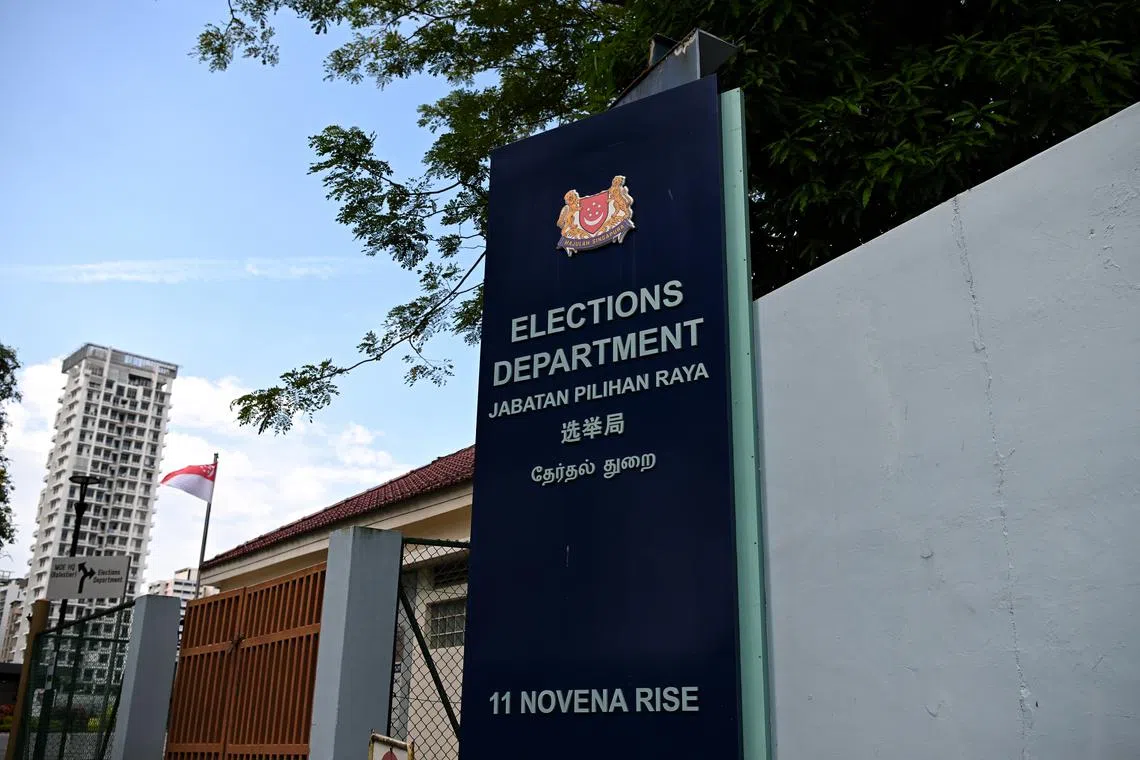Electoral Boundaries Review Committee not yet formed: Chan Chun Sing
Sign up now: Get ST's newsletters delivered to your inbox

The committee is typically made up of civil servants from the Singapore Land Authority, Housing Board, Department of Statistics and ELD.
ST PHOTO: KUA CHEE SIONG
Follow topic:
SINGAPORE – The Electoral Boundaries Review Committee (EBRC), which determines electoral boundaries ahead of each general election, has not been convened, Education Minister Chan Chun Sing said on July 2 in a written reply to a parliamentary question.
He added that the committee’s terms of reference will be set out when it is convened.
Mr Chan was responding on behalf of Prime Minister Lawrence Wong to Workers’ Party (WP) MP Louis Chua (Sengkang GRC), who had asked what terms of reference were provided to the EBRC, and what principles underlie how these terms are determined.
Mr Chan said that, based on the terms of reference for past committees, the EBRC will review the electoral boundaries and recommend the size and number of group representation constituencies and single-member constituencies.
“In its review, the EBRC should consider significant changes in the number of electors in each electoral division as a result of population shifts and housing developments since the last boundary delineation exercise,” he added.
For the last three general elections, the committee had also been tasked with reducing the size of GRCs and creating more single-member constituencies.
The committee is typically made up of civil servants from the Singapore Land Authority, Housing Board, Department of Statistics and Elections Department (ELD).
Ahead of the past four general elections in 2006, 2011, 2015 and 2020 being called, the committee had taken between two and seven months to do its work. The committee was last convened in August 2019,
This is not the first time an opposition MP has asked about the EBRC’s work.
In February, Mr Chan said in response to a question by WP MP Gerald Giam (Aljunied GRC) that there will be sufficient time
Then, Mr Giam asked if the Prime Minister will require the EBRC to provide detailed reasons for each constituency boundary change beyond considerations for constituencies’ sizes, to ensure fair representation and the need for adjustments as a result of population shifts.
Addressing this, Mr Chan said the committee independently considers relevant data before making its recommendations, so it will not be practicable for it to explain the technicalities and details of every change that it recommends.
Mr Giam had also asked if the Prime Minister would announce the EBRC formation when it happens.
Mr Chan responded: “As a matter of practice, the committee should be allowed to carry out its work professionally, away from media attention or public pressures.”
Ang Mo Kio GRC MP Gan Thiam Poh had also asked for an update on the number of voters in each electoral division, as well as the changes in voter numbers for divisions with the largest and smallest number of voters.
The ELD had said in a statement on June 18 that Singapore’s voter rolls have been updated to contain the names of all eligible electors as at June 1, 2024.
Mr Chan said there are 2,713,051 electors on the updated voter rolls. This is an increase of 3,644 people from the number of electors in the 2023 presidential election.
The largest electoral division is Ang Mo Kio GRC with 188,722 voters. This is a decrease of 1,076 from the presidential election.
The smallest electoral division is the single-seat ward of Yuhua with 20,349 voters, a decrease of 468 from the presidential election.

